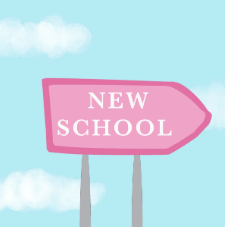“I haven’t been to a place in the United States where I have not met someone that is a native Spanish speaker,” OPHS Spanish teacher Francisco Henning said.
For approximately 306 years, Spanish was the official language of California, beginning at the original Spanish colonization in 1542, and ending when California ceded to the United States in 1848. English then took over as the dominant language of the United States. However, to this day, approximately 10.4 million Californians’ first language is Spanish.
Though there are various languages spoken in California – and some taught in OPHS such as French and Chinese – if you are debating which language to study at school, Spanish is your answer.
Job and Business Opportunities
Out of the 627,000 bilingual positions posted throughout the country, roughly 117,000 were in California. With the current challenges the California job market faces, fluently speaking Spanish gives you a leg up over your competitors. Not only does it help you find a job, knowing Spanish can support your salary. Bilingual employees can earn anywhere between 5 to 20% more money on average per hour than monolingual employees.
This is due to the skyrocketing need for bilingual employees. Workplaces ranging from retail, financial services, and medical professions all need language skill sets, with 85% of employers now relying on Spanish.

According to the graph from New American Economy, customer service representatives, sales representatives and retail salespersons are the top occupations that demand Spanish speaking employees. As the Latino population increases, these jobs have a natural spike in Spanish-speaking customers and need the language to sell their products.
Additionally, healthcare professionals, most notably registered nurses, have one of the highest number of job postings requiring the Spanish language. This is because the Latino community makes up a significant portion of the population, and a language barrier would prevent them from expressing their medical needs. The knowledge of Spanish improves doctor-patient communication, enhances patient trust and reduces deadly medical errors caused by language barriers.
Furthermore, law enforcement and legal services are a powerful branch of the United States in which language barriers are not just an uncomfortable boundary, but a life-changing one; jobs in this field are in particularly high demand for bilingualists. Misunderstandings in the legal field can result in unnecessary escalations by police, or wrongful sentencing in court hearings. Understanding Spanish can assist in criminal investigations, support lawyers with Spanish-speaking clients and make legal documents more accurate, upholding a fair and just legal system to ensure the smooth functioning of our state.
Although the demand for Spanish speakers has almost tripled in the last 15 years, the supply of bilingual speakers is low, with 42% of businesses experiencing a shortage of workers who speak the language. This leads to American businesses losing around $2 billion yearly due to language or cultural misunderstandings.
That loss highlights the importance of bilingualism in our world which has never been more connected. The globalization of our economy, society, and culture creates a demand for the skills to support our growing interdependence. With more companies crossing borders and internationalizing their market, business leaders and consumers rely on language to interact and communicate with one another.
Also, Mexico, a predominantly Spanish-speaking country, is the second-largest importer and exporter of goods and services for the United States. Our trading relationship shows the importance of the Spanish language, a skill that could decrease the billions of dollars lost to preventable miscommunications, thus reinvesting into our economy.
Cultural Enrichment
Have you ever been to a party where everyone was speaking a language you could not understand? It is tiresome to be the “Yo no sabo kid.” With Spanish and Latin American cultures often spending their “downtime” with friends and family, the knowledge of Spanish will aid in forging relationships at these social events. Instead of waiting for your friends to translate, you can hold a conversation on your own.
“Having the knowledge of a second language, or being multilingual, is going to help establish long-lasting relationships with other people. And more significant relationships than if you are monolingual,” Henning said.
When your environment is so largely populated by Spanish speakers, it is easy to see them during cafe stops, grocery shopping or work hours. Finding a commonality like a similar language makes daily interactions easier and helps build a community. It allows people from different backgrounds to engage more deeply with each other, and build more inclusive, welcoming neighborhoods that foster empathy towards other social groups.
Interacting with Spanish-speaking social groups exposes you to new ideas and ways of thinking. Communities revolving around Spanish as a social tie will develop a different set of values, traditions, and norms than English-speaking ones. As a result, the way you interact with the world will evolve and change. Your experiences will be guided by a multi-faceted understanding of the world through the lenses of different cultures.
Although it is important to remember that English is our country’s official language, and is used by a greater portion of the United States. Many would argue that any language aside from English is unnecessary to know in order to function in our society. While they are correct, the knowledge and opportunities that come with Spanish as a second language greatly outweigh those without it.
Cognitive Benefits
Learning more than one language shapes the functioning of your brain. Scientists have observed noticeable physical change within the brain while learning and using a second language. This change is the densening concentration of grey matter, distinctly noted when comparing monolingual and bilingual individuals. Learning new information builds grey matter by introducing new neurons and nerve pathways which keep the brain healthy. Although grey matter can be introduced through any method of learning, language is thought to have a bigger impact because it teaches you a new way of thinking.
Learning a second language allows you to understand, interpret, and analyze information using different perspectives. For example, Spanish speakers associate the past with being behind them, while the future is ahead. In contrast, people who use Mandarin tend to refer to the future as being below them, while the past is above. This is correlated to the way they write, either being from left to right (Spanish) or top to bottom (Mandarin). Another example is that German speakers tend to focus on the start and endpoints of an event, while English speakers describe the action. Given our language’s structure, we are provided the words to express ourselves but are limited to the confines of our vocabulary and grammar. Thinking in different structures and terms allows you to interact with the world differently, expanding the capacity of thinking.
Similarly to the muscles of our body, tasking our brain to form a new way of thinking forces it to adapt to the work load. Learning languages enhances memorization skills and recall through the learning of new words and practice of them. Bilinguals consistently perform better on memory tests than monolinguals, showing their improvement in short and long term memory. Improved concentration, communication, and creativity are other byproducts of bilingualism. Bilinguals develop stronger problem-solving, flexibility, willingness to adapt, and other traits which assist them throughout life.
Conclusion
Learning Spanish will greatly influence your job prospect, health, and social life. Look at the statistics – data cannot lie.
“I feel like it’s a number thing. There are so many Spanish speaking people living in the United States that it has become impossible not to find a Spanish-speaking person,” Henning said. “20 or 40 years ago, it was difficult with states not bordering Mexico. But now, Spanish is everywhere.”
Mr. Henning is right. The number of Spanish-speakers in the United States continues to increase – and even with the current changes in government – Spanish speakers are estimated to grow from 53 million to 132.8 million people. Our country evolves constantly, and we must adapt to those changes. Hopefully, you will learn to adjust your choices too. So put Spanish on your schedule, because it’s your best bet.









